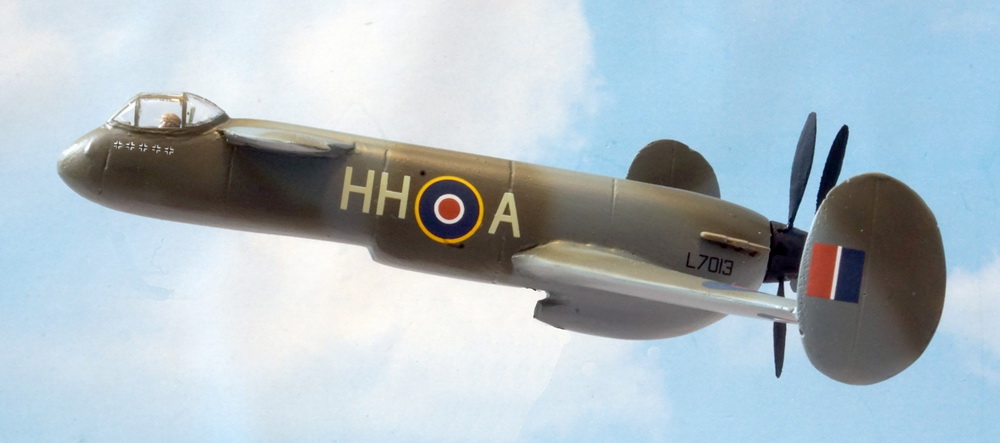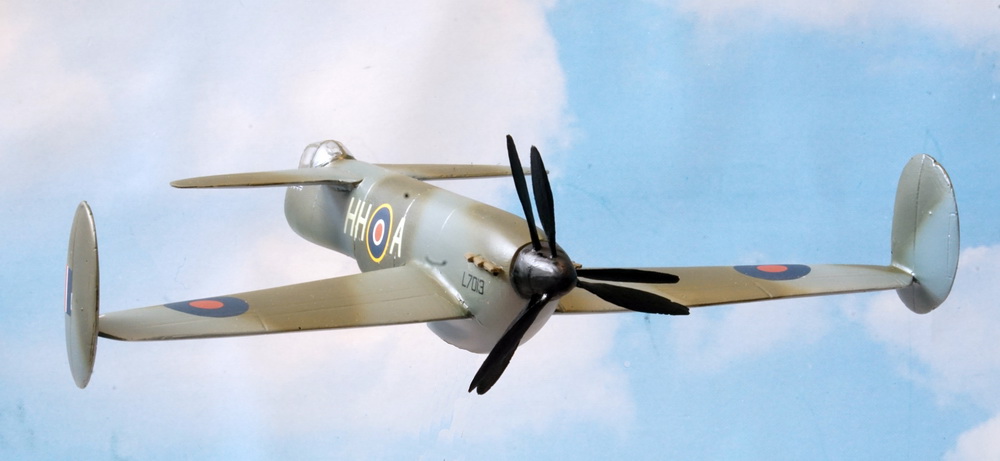Boulton Paul Buzzard Mk-I
Specification F.6/42 called for a fighter with a
high rate of climb (4,500ft/ min to 20,000ft), good acceleration and
good manoeuvrability. Boulton Paul submitted two designs: the P-99 and
P-100 The P.100 was an advanced design. It was a tail-first aircraft,
with shoulder mounted canard wings just behind the cockpit and low
mounted swept back main wings near the rear of the aircraft. The
vertical tail surfaces and rudders were at the tip of the swept back
wings. The pilot sat in the nose, with a good view from his all-round
vision canopy. The P.100 had a tricycle undercarriage. In case of
emergency the pilot escaped from the aircraft by jettisoning part of
the lower forward fuselage and dropping down out of the aircraft.
Competing designs were the Folland Fo.117, Hawker P.1018, P.1019 &
P.1020, Airspeed AS.56 and Miles M.42. At the end of 1942 the two
Boulton Paul designs were selected for development and two prototypes
were ordered of each of them.

The first prototype P-100, now called Buzzard flew
in January 1944 and showed a very good performance. After some trouble
free trials 500 Buzzard Mk I aircraft were ordered for the RAF. The
first production aircraft was delivered to the RAF in August 1944. The
Buzzard served as a heavy fighter and ground attack aircraft in France
and later on also in the Pacific. In all 1650 Buzzards were built and
the type remained in use until 1952.

|

